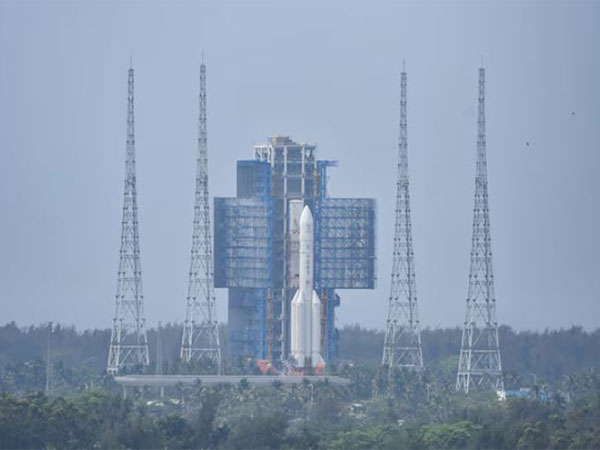
Beijing: China's Chang'e-6 lunar probe has achieved a historic feat by landing on the far side of the Moon and embarking on a groundbreaking mission to collect samples from this rarely explored terrain, Chinese State media reported on Sunday.
The China National Space Administration (CNSA) announced this milestone, marking the first time in human history that samples will be gathered from this enigmatic region of the lunar surface.
With the support of the Queqiao-2 relay satellite, the Chang'e-6 lander-ascender combination successfully touched down at the designated landing site within the South Pole-Aitken (SPA) Basin. This region, nestled on the far side of the Moon, presents a unique and challenging landscape for scientific exploration, as reported by Xinhua.
Comprising an orbiter, a returner, a lander, and an ascender, Chang'e-6 has undergone a meticulously planned journey since its launch on May 3 of this year. From the stages of Earth-Moon transfer to near-Moon braking, lunar orbiting, and finally, the descent to the lunar surface, each step has been executed with precision by the CNSA.
The chosen landing site, the Apollo Basin, holds immense scientific potential for exploration. Huang Hao, a space expert from the China Aerospace Science and Technology Corporation (CASC), explained that the decision to target the Apollo Basin was influenced by its scientific significance and favourable landing conditions.
Despite the rugged terrain characteristic of the far side of the Moon, the relatively flat surface of the Apollo Basin offers an ideal location for landing and subsequent sampling operations.
Following the successful landing, Chang'e-6 is poised to commence its sampling mission, scheduled to be completed within two days. Employing two distinct methods, the probe will collect samples both from the subsurface using a drill and from the lunar surface using a robotic arm.
Jin Shengyi, another esteemed space expert from the CASC, revealed the meticulous preparations undertaken by the Chang'e-6 development team to ensure the success of the sampling process.
A simulation lab was established in advance, replicating the lunar environment and conditions surrounding the landing site. Through this simulation, sampling strategies and equipment control procedures were meticulously crafted and verified, ensuring the accuracy and efficiency of the mission.
Despite the challenges posed by the Moon's obstruction, which results in a shorter Earth-Moon communication window on the far side, the Chang'e-6 mission is poised to optimise efficiency through autonomous operations.
Jin elaborated on the intelligent capabilities incorporated into Chang'e-6, allowing the probe to execute instructions and make judgments autonomously, thus reducing the need for constant Earth-based intervention.
In a significant advancement, the Chang'e-6 mission aims to streamline operations by significantly reducing the number of instructions sent from ground control.
With an anticipated reduction from approximately 1,000 to 400 instructions throughout the sampling process, Chang'e-6 epitomises the advancements in autonomous space exploration, Xinhua reported.